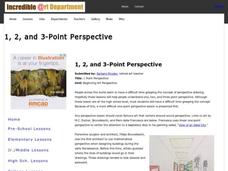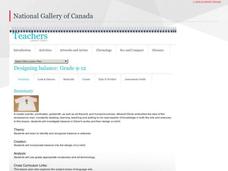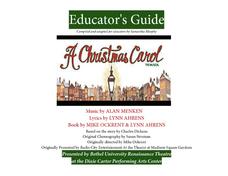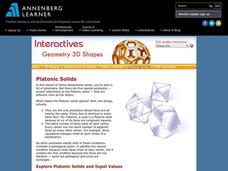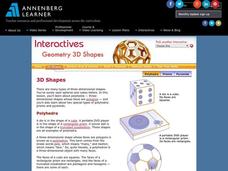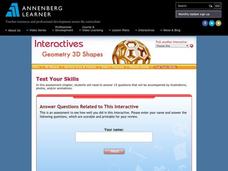Curated OER
What Would Ben Franklin Do?
Employ Ben Franklin's 13 virtues to a modern drug-abuse prevention plan.
Curated OER
Sentence Completion 10: Low-Advanced SAT Level
Commiserated, cogitated, ameliorated? Whether used as test prep or as part of a vocabulary study, the problems on this sentence completion worksheet will challenge your learners. Provide them with the detailed answer key and groups can...
Curated OER
Semicolon vs. Colon...And What is a Comma Splice?
Designed originally for higher education, this PowerPoint could also be used to introduce your high schoolers to the semicolon, colon, and comma splice. The texts do not contain pictures or graphics; instead, they present information in...
Roy Rosenzweig Center for History and New Media
War and Poetry
A band of brothers or the Devil's agents? Nobel warriors freeing the oppressed or mercenaries working for the military/industrial complex? Groups examine poems from the Civil War, World War I, and World War II to determine the poets'...
National Gallery of Canada
Reading Symbols
Introduce your upper-elementary students to printmaking. Class members view prints, select and research symbols in a piece, and create their own sets of prints using styrofoam trays. Pupils can wash off the paint on their trays to make...
National Gallery of Canada
My First Print
Practice printmaking with a fun activity. After observing images, class members use the listed materials, such as stamps and sponges, create their own prints. They experiment with layering, pressure, and paint colors.
National Gallery of Canada
Mastering One-Point Perspective
Cover one-point perspective through observation and practice. Class members examine several works of art that use one-point perspective, look at magazine images to find the vanishing points and horizon lines, and draw their own city...
Incredible Art
1, 2, and 3-Point Perspective
Introduce drawing students to perspective with a series of lesson that detail how to draft images in one-, two-, and three-point perspective. Each exercise includes step-by-step, illustrated directions and examples.
National Gallery of Canada
Designing Balance
Teach your artists how to incorporate balance into their work through discussion and action. After viewing and discussing several works of art, learners design a balanced image for a T-shirt and follow the step-by-step instructions to...
National Gallery of Canada
Emphasizing Prints
Focus on how an artist creates emphasis on certain areas of a work with an examination of several works of art and a printmaking project. Follow the discussion suggestions and step-by-step printmaking instructions to successfully...
Curated OER
Educator's Guide: A Christmas Carol
Planning on using Charles Dickens' A Christmas Carol this year? Then give yourself a gift and download this colorful guide thats packed with goodies. Kids, as well as the ghosts of Christmas past, present, and future are sure to...
Art Authority
Art Authority K-12
Image field trips to museums that display over 1000 major works of western art. Imagine no airfare, no long lines, and only one admission fee. Imagine viewing at your convenience, with your own private docent providing information about...
Virginia Department of Education
World History and Geography: 1500 A.D. (C.E.) to the Present
Intended to help Virginia teachers align their curriculum to the state's history and social science standards, this packet provides a wealth of materials for any social studies or science instructor. Loaded with plans,...
It's About Time
Elements and Their Properties
How did ancient scientists classify elements? Answer this question and others as young chemists create a device to test the properties of various elements. They classify elements as metals or nonmetals, learn to differentiate...
EngageNY
Why Do Banks Pay YOU to Provide Their Services?
How does a bank make money? That is the question at the based of a lesson that explores the methods banks use to calculate interest. Groups compare the linear simple interest pattern with the exponential compound interest pattern.
Philadelphia Museum of Art
Physics at the Art Museum: Kinetic Energy, Potential Energy, and Work
Connect science, math, and art for a true interdisciplinary activity! Learners explore simple machines in art. Through analysis with a physics app, they identify positions of kinetic and potential energy and make conclusions about work.
American Documentary
American Aloha: Hula Beyond Hawai'i
In this lesson, students will examine Hawaii's issues of colonization, authority, authenticity and cultural identity, and understand the distinction between native and non-native Hawaiians. This lesson includes links to videos, links to...
Portland Public Schools
Teaching Tone to Teenagers
Tone is a tough topic to teach to teenagers. But never, fear, help is here in the form of a unit plan that takes advantage of their interest in music to set the stage for a series of activities that lead them to understand how setting,...
Annenberg Foundation
Geometry 3D Shapes: Platonic Solids
From polyhedrons to platonic solids, here is a lesson that will have your classes talking! As an introduction to platonic solids, scholars cut and fold nets to create the three-dimensional solids. They use an interactive component to...
Annenberg Foundation
Geometry 3D Shapes: Euler's Theorem
How do you get a theorem named after you? Euler knows what it takes! The third lesson of five asks pupils to use an interactive activity to compare the faces, vertices, and edges of seven different three-dimensional solids. They use...
Annenberg Foundation
Geometry 3D Shapes: Surface Area and Volume
Whether you wrap it or fill it, you're using geometric concepts. Classmates use an interactive approach to learn how to find volume and surface area of cylinders and prisms in the second lesson in a five-part series. The online lesson...
Annenberg Foundation
Geometry 3D Shapes: 3D Shapes
Explore vocabulary related to three-dimensional shapes. An instructional website describes the characteristics of different geometric solids. Learners can use an interactive component to view nets, faces, vertices, and edges of common...
Annenberg Foundation
Geometry 3D Shapes: Test Your Skills
Time to find out what they've learned! The final lesson of a five-part series has learners complete a 39-question multiple choice review. They use what they've learned in the previous lessons to complete questions that include concepts...
Curated OER
Early Royal Governments
In this online interactive world history worksheet, students answer 7 multiple choice questions regarding early royal governments. Students may submit their answers to be scored.
Other popular searches
- The Renaissance Art
- The Renaissance Man
- The Renaissance Period
- The Renaissance Period Quiz
- The Renaissance Man Video
- The Renaissance Reformation









